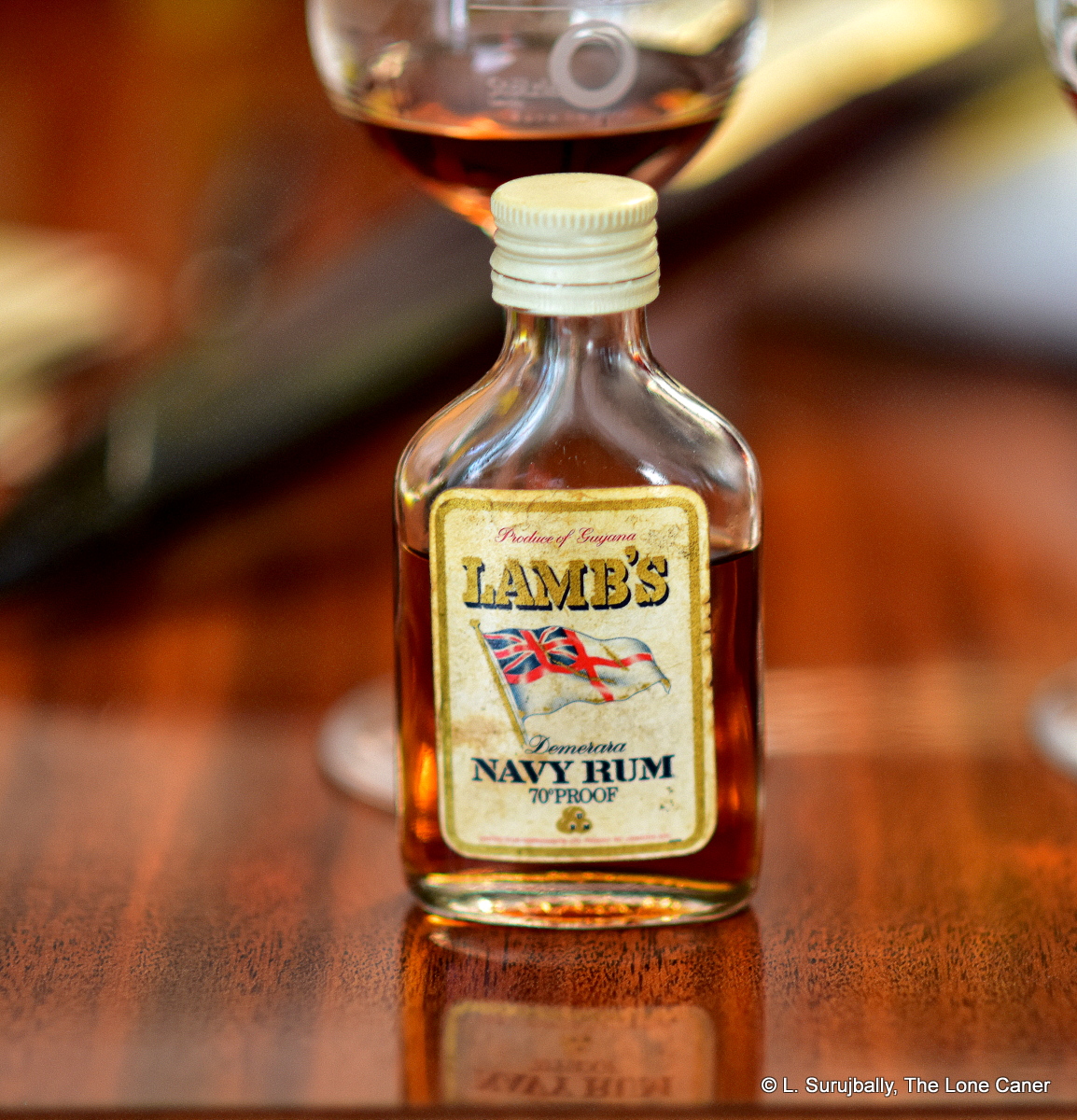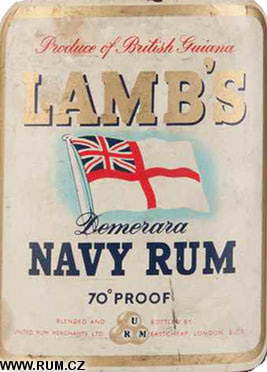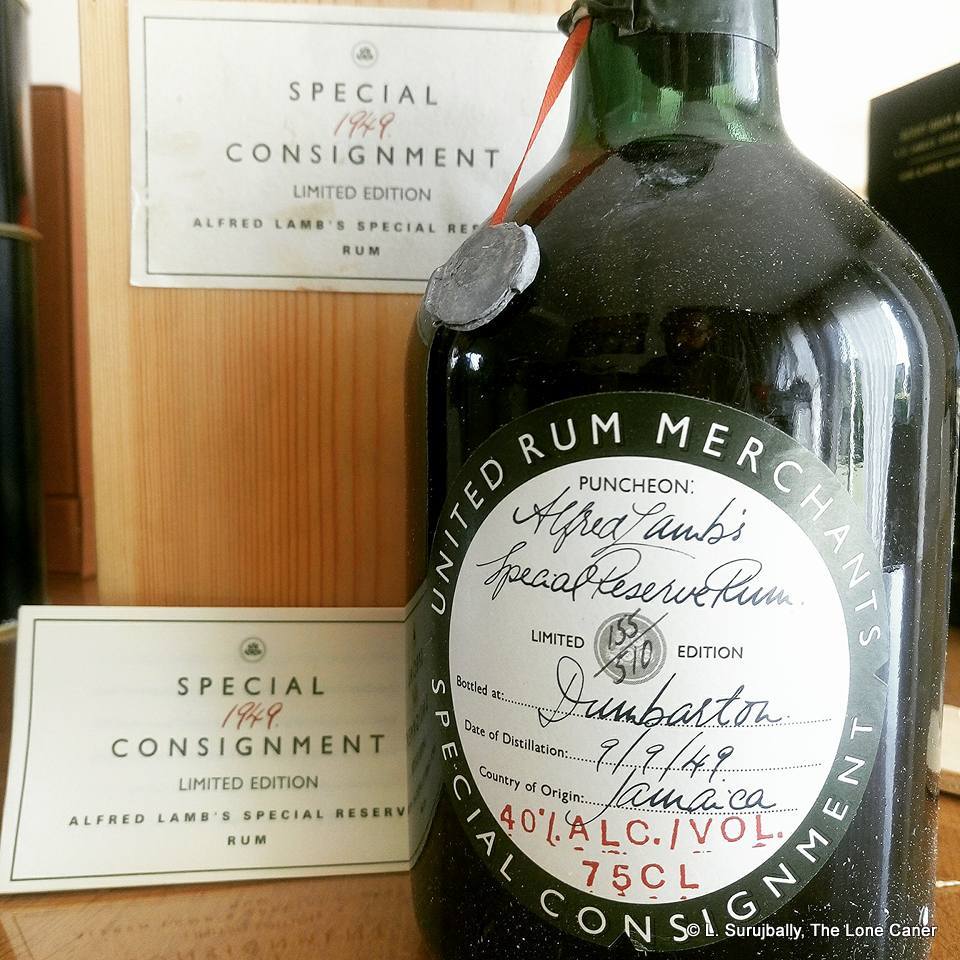
Rumaniacs Review 0108 | 0693
This rum is a companion of the Lamb’s 70º Demerara Navy and other UK rums made by various merchants bottlers, e.g. Four Bells Finest Navy Rum, Mainbrace, Black Heart, Red Duster Finest Navy, Old Vatted Demerara rum, and so on. It’s admittedly a treat to try them and trace their dusty, almost-forgotten companies of origin.
This Navy wannabe was made when the UK had moved beyond the degrees proof (in 1980) but while United Rum Merchants was still located in Tooley Street, London and not yet taken over by Allied Domecq in the early 1990s. At this stage in the recent history of rum, blends were still the way to go, and if anything had a name-recognition factor, it was certainly “Demerara rum”, which this presumed to be. Alas, that’s all we really get – so while the label helpfully notes it is a blend of rums from Barbados, Guyana, Jamaica and Trinidad, do not hold your breath waiting for a dissertation or scholarly analysis of the proportions, the ageing, or even which stills or distilleries made up the blend. Such details are long lost or long buried.
Colour – Dark Amber
Strength – 40% ABV
 Nose – Quite a bit different from the strongly focussed Demerara profile of the Navy 70º we looked at before – had the label not been clear what was in it, I would have not guessed there was any Jamaican in here. The wooden stills profile of Guyana is tamed, and the aromas are prunes, licorice, black grapes and a light brininess. After a while some salt caramel ice cream, nougat, toffee and anise become more evident. Sharp fruits are held way back and given the absence of any kind of tarriness, I’d hazard that Angostura provided the Trinidadian component.
Nose – Quite a bit different from the strongly focussed Demerara profile of the Navy 70º we looked at before – had the label not been clear what was in it, I would have not guessed there was any Jamaican in here. The wooden stills profile of Guyana is tamed, and the aromas are prunes, licorice, black grapes and a light brininess. After a while some salt caramel ice cream, nougat, toffee and anise become more evident. Sharp fruits are held way back and given the absence of any kind of tarriness, I’d hazard that Angostura provided the Trinidadian component.
Palate – Sweet, medium-thick and quite pungent, which is nice for a 40% rum. It’s mostly pears, anise and caramel that jockey for attention – everything else is a second order effect. It’s briny off and on but not of sea water or an olive, more like butter or caramel. It’s nicely dry, with some dark fruits coiling restlessly around and about, all quite indeterminate.
Finish – Quite nice. One does not expect a long denouement with a standard strength rum, of course, yet even by that low standard this isn’t bad, being dry, leathery, not very sweet or dark, and some prunes, dates, and blackberries.
Thoughts – It’s a rather tame blend, maybe aged a wee bit, lacking any kind of single-mindedness of taste or smell…which may have been the point, as the official Navy recipe was never a static thing, and (for example) the Jamaican portion kept varying based on the opinions of the day. It’s milder and not overwhelmed by either the funky Jamaican or the dour, wood-forward Demerara components, and that’s its selling point and strength. I do like uncompromising Port Mourant based rums, but this one isn’t half bad for what it is.
(81/100)(#692 | R-0108)

 This bottle likely comes from the late 1970s: there is an earlier version noted as being from “British Guiana” that must have dated from the 1960s (Guyana gained independence in 1966) and by 1980 the UK largely ceased using degrees proof as a unit of alcoholic measure; and United Rum Merchants was taken over in 1984, which sets an absolute upper limit on its provenance (the URM is represented by the three barrels signifying Portal Dingwall & Norris, Whyte-Keeling and Alfred Lamb who merged in 1948 to form the company). Note also the “Product of Guyana” – the original blend of 18 different rums from Barbados, Guyana, Jamaica and Trinidad pioneered by Alfred Lamb, seems to have been reduced to Guyana only for the purpose of releasing this one.
This bottle likely comes from the late 1970s: there is an earlier version noted as being from “British Guiana” that must have dated from the 1960s (Guyana gained independence in 1966) and by 1980 the UK largely ceased using degrees proof as a unit of alcoholic measure; and United Rum Merchants was taken over in 1984, which sets an absolute upper limit on its provenance (the URM is represented by the three barrels signifying Portal Dingwall & Norris, Whyte-Keeling and Alfred Lamb who merged in 1948 to form the company). Note also the “Product of Guyana” – the original blend of 18 different rums from Barbados, Guyana, Jamaica and Trinidad pioneered by Alfred Lamb, seems to have been reduced to Guyana only for the purpose of releasing this one.
